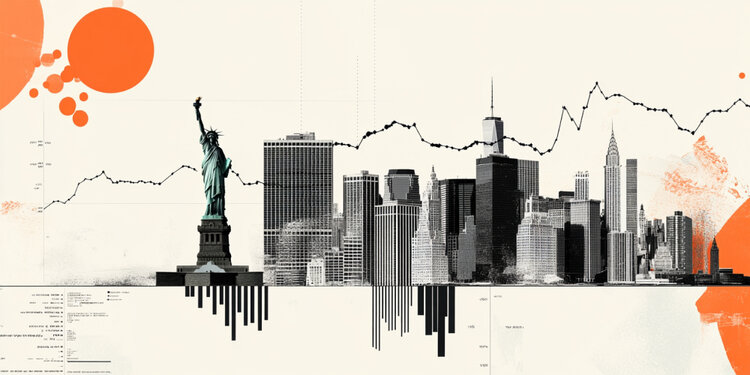- The Dow Jones extended a bullish recovery on the back of rate cut hopes.
- US inflation remains above targets, but pressures may be easing slightly.
- Treasury yields are getting cheaper and rate cut bets are back on the rise.
The Dow Jones Industrial Average (DJIA) added over a full percentage point in value on Friday, climbing around 500 points and vaulting back over 43,500 as market expectations for further rate cuts increased. Tech stocks are back on the rise as traders pile back into their risk appetite ways, and the banking sector is broadly climbing after a wide swath of better-than-expected earnings reports from major investment banks this week.
The inauguration of US President Donald Trump will take place next week, on Monday, when US markets will be shuttered for Martin Luther King Day. Equities are poised to continue the exuberance train for the time being. Trump’s election night win in November sparked a massive rally as traders eyed a potential future with deregulation, lower taxes, and higher equity valuations.
Key inflation metrics gave just enough ground this week for Treasury yields to ease as investors look for signs of cooling inflation to reignite rate cut talk at the Federal Reserve (Fed). While some inflation segment accelerated recently, the figures overall came in below expectations, prompting markets to reassess the odds of a Fed rate trim in the first half of 2025.
According to the CME’s FedWatch Tool, rate markets are now seeing greater than even odds of a 25 bps rate cut in May, with a second rate cut expected in December. Investor hopes for rate cuts took a beating to kick off the new year, and equity traders needed to go through a tantrum period after hopes for four-plus rate cuts in 2025 disintegrated this December past.
Dow Jones news
Friday’s rally is firmly gripping the Dow Jones, with nearly every single listed security gaining ground for the day. Nvidia (NVDA) is back on the high side, climbing 3% and tapping $138 per share once again, with Salesforce (CRM) bumping another 2.5% higher to $328 per share.
Dow Jones price forecast
Bears just can’t have anything nice. The Dow Jones is back above the 50-day Exponential Moving Average (EMA), and bulls can now breathe a sigh of relief. The major equity index still has a long way to go to reclaim record highs set above 45,000 last December, but bidders will happily take a 4% gain in a single week.
Still, the near-term bull run cost a lot of ground on momentum oscillators, and buyers shouldn’t be surprised by any interim pullbacks as downside pressure turns elastic. The Dow Jones’ immediate technical floor is priced in at 42,000, but there’s still plenty of wiggle room at the 50-day EMA near 43,100.
Dow Jones daily chart
Fed FAQs
Monetary policy in the US is shaped by the Federal Reserve (Fed). The Fed has two mandates: to achieve price stability and foster full employment. Its primary tool to achieve these goals is by adjusting interest rates. When prices are rising too quickly and inflation is above the Fed’s 2% target, it raises interest rates, increasing borrowing costs throughout the economy. This results in a stronger US Dollar (USD) as it makes the US a more attractive place for international investors to park their money. When inflation falls below 2% or the Unemployment Rate is too high, the Fed may lower interest rates to encourage borrowing, which weighs on the Greenback.
The Federal Reserve (Fed) holds eight policy meetings a year, where the Federal Open Market Committee (FOMC) assesses economic conditions and makes monetary policy decisions. The FOMC is attended by twelve Fed officials – the seven members of the Board of Governors, the president of the Federal Reserve Bank of New York, and four of the remaining eleven regional Reserve Bank presidents, who serve one-year terms on a rotating basis.
In extreme situations, the Federal Reserve may resort to a policy named Quantitative Easing (QE). QE is the process by which the Fed substantially increases the flow of credit in a stuck financial system. It is a non-standard policy measure used during crises or when inflation is extremely low. It was the Fed’s weapon of choice during the Great Financial Crisis in 2008. It involves the Fed printing more Dollars and using them to buy high grade bonds from financial institutions. QE usually weakens the US Dollar.
Quantitative tightening (QT) is the reverse process of QE, whereby the Federal Reserve stops buying bonds from financial institutions and does not reinvest the principal from the bonds it holds maturing, to purchase new bonds. It is usually positive for the value of the US Dollar.
Read the full article here


